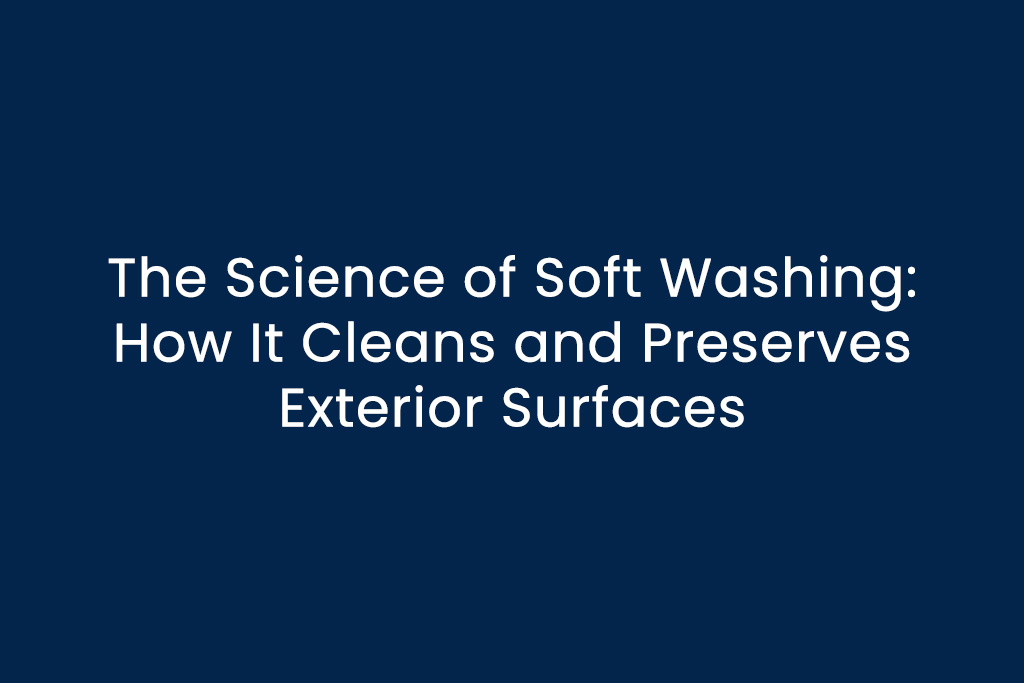Soft washing is more than just a simple cleaning method. It’s a science that efficiently removes dirt, grime, and contaminants while preserving the integrity of various surfaces. In this blog, we’ll dive into the chemistry behind soft washing and how it can transform your home’s exterior.
Understanding the Chemistry of Soft Washing
At the heart of soft washing is a powerful combination of specialized detergents and water. The key to its effectiveness lies in the science of breaking down contaminants, dissolving stains, and protecting your surfaces.
- Detergents and Surfactants: Soft washing detergents contain surfactants, which are molecules with hydrophilic (water-attracting) and hydrophobic (water-repelling) ends. This unique property allows surfactants to surround and lift away contaminants from surfaces. They break the surface tension of water, making it easier to clean, and help the detergents spread evenly.
- The Power of Bleach: Sodium hypochlorite, a type of bleach, is often used in soft washing detergents. It is highly effective in killing algae, mildew, and mold. The bleach component of the detergent attacks the organic matter, breaking it down at a molecular level and killing it.
- Preservation and Protection: Soft washing doesn’t just clean; it also protects your surfaces. Some detergents contain agents that leave behind a protective coating. This coating acts as a barrier, preventing the rapid return of contaminants and helping to maintain the cleanliness of your exterior surfaces for a longer period.
Why Soft Washing Works
The chemistry of soft washing allows for the effective removal of dirt, algae, mold, mildew, and other contaminants without the need for high-pressure water. This gentle yet thorough approach ensures the safety and preservation of delicate surfaces like vinyl siding, painted wood, and roofs.
Applications of Soft Washing
Soft washing is a versatile cleaning method suitable for various surfaces:
- Siding: Soft washing efficiently removes dirt, algae, and other contaminants from vinyl, wood, and stucco siding.
- Roofs: Soft washing rejuvenates roofs by removing moss, algae, and stains, extending their lifespan.
- Decks and Patios: Soft washing can restore the natural beauty of wood and concrete surfaces.
- Fences: Fences made of wood or vinyl can benefit from soft washing to remove grime and mildew.
Eco-Friendly Cleaning
Another advantage of soft washing is its eco-friendly nature. It uses minimal water and relies on biodegradable detergents. The science behind soft washing ensures that cleaning is effective without causing harm to the environment.
Conclusion
Soft washing is not just a cleaning method; it’s a scientific approach to cleaning and preserving the beauty of your home’s exterior. Understanding the chemistry behind soft washing highlights its efficiency and eco-friendliness. Whether you need to clean your siding, roof, or outdoor surfaces, soft washing is a safe and effective choice that provides long-lasting results.

